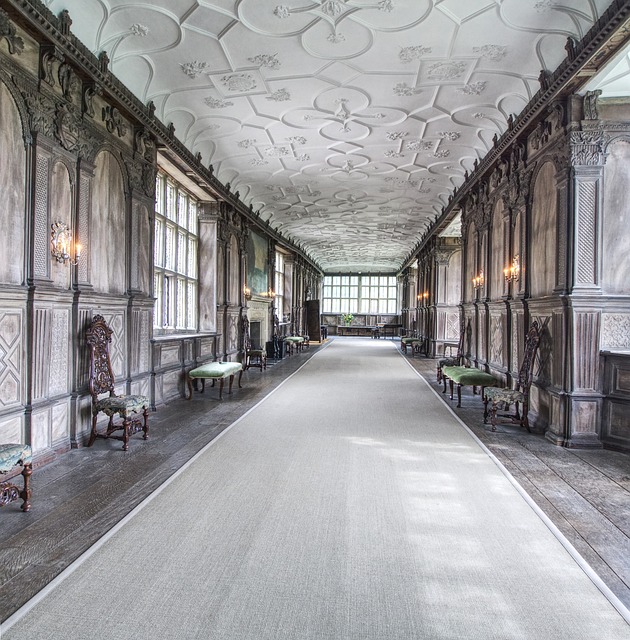Lane County, Oregon's prohibition history (1920-1933) was shaped by geographical isolation, teetotal settlements, and diverse communities, leading to local prohibitions before the national ban. This era transformed social dynamics, economies, and political participation, leaving a complex legacy on the county's cultural identity and discussions around alcohol policy. Today, historical societies preserve this unique prohibition history, reflecting its enduring impact.
“Delve into the captivating history of Lane County, Oregon, during the Prohibition era, a period that left an indelible mark on its communities. This era, spanning from 1920 to 1933, witnessed the local impact of national policy asLane County residents navigated a ‘dry’ landscape. From the social and political upheaval to the challenges of enforcement, this article explores Oregon’s early years, the rise of Prohibition, its lasting legacy, and more, shedding light on Lane County’s unique prohibition history.”
- Historical Context: Oregon's Early Years
- The Rise of Prohibition in Lane County
- Social and Political Impact on Local Communities
- Enforcing the Ban: Challenges and Consequences
- Legacy and End of Prohibition Era
Historical Context: Oregon's Early Years

Oregon, including Lane County, had a unique path regarding Prohibition. The early years saw a state that was relatively dry due to a combination of factors. Historically, Oregon’s isolation and rugged terrain deterred widespread settlement, delaying the influence of powerful liquor interests. Additionally, the state’s first settlers were largely opposed to alcohol for moral and religious reasons, leading to a culture that embraced teetotalism. This early attitude toward abstinence set the stage for Oregon’s future stance on Prohibition. Lane County, with its diverse communities, mirrored these broader trends, with some towns adopting local prohibitions even before the national ban in 1920. The county’s history during this era is a fascinating exploration of community dynamics and the clash between personal freedoms and collective moral values.
The Rise of Prohibition in Lane County

In the early 20th century, as the nation grappled with issues of alcohol regulation, Lane County, Oregon, found itself at the forefront of a significant historical shift: the Prohibition era. This period, spanning from 1920 to 1933, marked a dramatic change in the county’s social and political landscape. The roots of this transformation can be traced back to growing concerns over alcohol’s impact on public health, morality, and community welfare. Local efforts to curb drinking had been ongoing, but it was the national 18th Amendment that officially ushered in Prohibition, banning the production, sale, and transportation of alcoholic beverages.
Lane County residents, like many others across the country, were divided on the issue. Proponents argued that prohibition would foster a healthier society and reduce crime rates, while opponents saw it as an infringement on personal freedom. Despite this divide, the law took effect, leading to the closure of saloons and a significant shift in the county’s social dynamics. This era left a lasting impact on Lane County’s history, shaping its cultural identity and influencing future discussions around alcohol policy.
Social and Political Impact on Local Communities

The Prohibition era in Lane County, Oregon, had profound social and political implications for local communities. With the 18th Amendment coming into effect in 1920, the region, like many others across the nation, underwent a significant cultural shift. What was once a vibrant social scene centered around saloons and drinking establishments saw a sudden and dramatic change as these venues were forced to close. This transformation had a ripple effect on local economies, with businesses that relied heavily on these institutions facing substantial financial setbacks.
Moreover, the era brought about a sense of community division and political activism. Local residents either fervently supported or vehemently opposed the ban on alcohol, sparking lively debates and intense political participation. The social fabric of Lane County was altered, as traditional gathering places were no longer accessible, leading to a need for alternative forms of entertainment and community engagement. This period left an indelible mark on the region’s history, shaping its cultural landscape and the way locals interacted with one another.
Enforcing the Ban: Challenges and Consequences

The enforcement of the Prohibition ban in Lane County, Oregon, presented unique challenges for local authorities. With a thriving underground liquor trade, officers faced an uphill battle to curb illegal activities. The county’s geographic diversity, from urban areas like Eugene to rural communities, made it difficult to patrol and regulate every corner. Smugglers exploited these diverse landscapes, using creative routes and hiding spots to transport contraband. This led to increased tension between law enforcement and the community, as innocent citizens often found themselves caught in the crossfire or became victims of violent confrontations over illicit alcohol.
Consequences of the Prohibition era were far-reaching. The illegal trade fueled crime rates, with gang violence and organized criminal networks becoming more prevalent. The social fabric of the county was strained, as the black market affected local economies and promoted corruption. Despite these challenges, determined law enforcement officers continued their efforts to uphold the law, leaving a complex legacy in Lane County’s history that still resonates today in discussions about substance control and community resilience.
Legacy and End of Prohibition Era

The legacy of Lane County’s prohibition era is a fascinating chapter in its history, reflecting societal shifts and local community dynamics. Despite the national focus on Prohibition, ending this period in Lane County was a nuanced process shaped by local attitudes and economic considerations. As the 1930s rolled around, the country’s stance on alcohol began to shift, influenced by changing social mores and economic realities. This shift was felt in Lane County as well, leading to a gradual relaxation of the strict prohibition laws.
The end of Prohibition in 1933 marked a significant turning point for the county. Local businesses that had adapted to serve only non-alcoholic beverages could finally diversify their offerings, catering to a newfound demand for beer and wine. This period also saw the emergence of new social norms as residents adjusted to the legal availability of alcohol once again. The legacy of this era continues to shape Lane County’s identity, with historical societies and cultural institutions preserving the memories and stories from this pivotal time in Oregon’s history.
